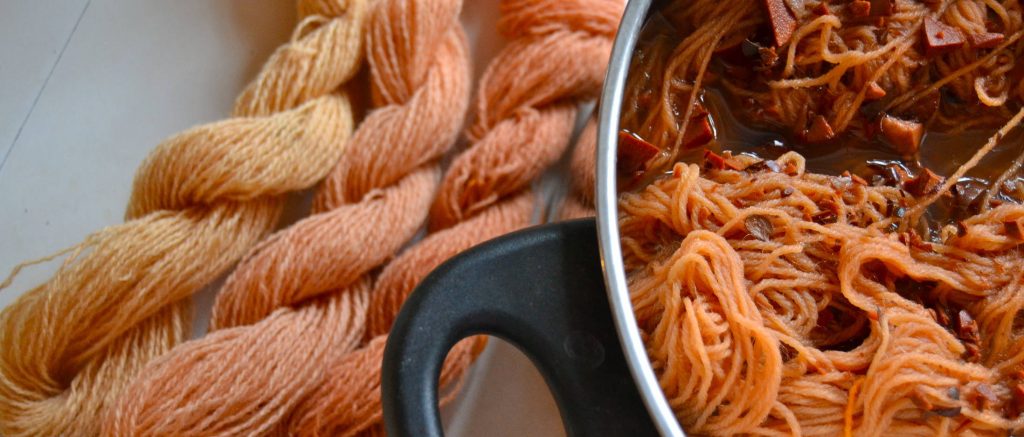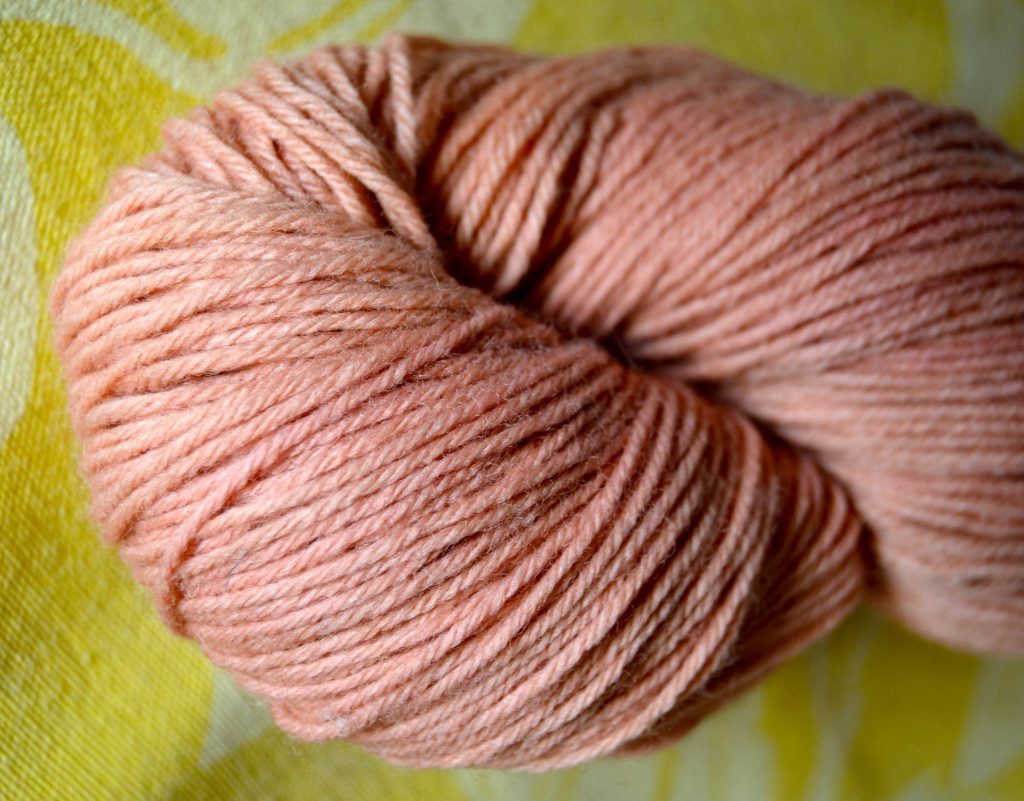My recent attempt at dyeing with fermented avocado pits was only partially successful – I got three nice pink-ish test skeins out of it (on the left, dry) but two skeins of sock yarn came out a drab beige (still in the pot, so wet, which makes the color look nicer than it is)

So I decided to tweak the color in the pink direction, but only a very little bit.
This could be a general strategy for all those beige skeins!! Beige twisted towards pink is a very attractive color to my eye, an old dusty rose, but beige is just that – beige. My least favorite color. The color that makes even beautiful people look plain. So plain-looking people should steer way clear of it. Not to mention old wrinkled people.
I made a dye bath with 1/4 g cochineal. My ordinary kitchen scale doesn’t go that low, so I weighed off 5 g, divided them roughly in 5, and then took a quarter of that pile. We are down to individual lice, here. I used that on 300 g of sock yarn, two that were already avocado dyed and one white:

The avocado/cochineal skeins are the two in the back, and the middle skein is the one that went into the same dye bath, so it got 1/3 of 1/4 g of cochineal. Not much at all! The two front skeins are two more fresh 100 g skeins of sock yarn that got each 1/8 g of cochineal.
I love all of these pinks, and what is even better is the light-fastness of cochineal. In many ways, the properties of cochineal seem closer to a chemical dye, but it’s all just from a small louse.
And here is one avocado pit/cochineal skein up close

FACTS – AVOCADO PITS + COCHINEAL
Mordant 10% alun
Water Tap (avocado pits) and rain (cochineal)
Yarn Sock yarn 75% wool, 25% polyamide 350m/100g
Yarn:Dyestuff ratio 1:1 for avocado pits, then 0.08:1 for cochineal
Conclusion The final color is lovely, and tweaking with cochineal could well be a general solution to the beige problem